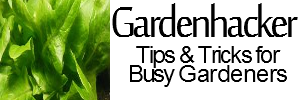Updated: From the University of Hawaii, Thanks to djeanis for the update! Link to U of HI paper on the process.
http://www.ctahr.hawaii.edu/oc/freepubs/pdf/SA-10.pdf
Here’s a recipe I found and an interesting article, just don’t know how long to roast ’em for:
1. Roast/toast eggshells.
2. Soak roasted eggshells in equal volume of vinegar for two weeks until the vinegar dissolves the eggshells.
3. Dilute 1:20 parts water and spray on plants or water into plants.
4. Note below that this is best used during a specific period in the plants growth, just before flowering/fruiting.
This is from the BIM piece posted on an earlier thread:
“Calcium Phosphate
A lot of agriculture advisers have used calcium phosphate for better plant growth, health, pest and disease controls. Natural farmers use this very specific bionutrient. Under the theory of Nutrioperiodism developed by a Japanese horticulturist, Yasushi Inoue in the 1930�s, plants and animals need a very specific nutrient relative to the stage of their development. In the plant, there is the essential vegetative growth , changeover and the reproductive periods. In animals, like humans, there is the infantile, juvenile and adulthood. It is not only critical to provide the right nutrient at the right stage of the development, but also critical to use or apply specific nutrient of calcium phosphate in the juvenile or changeover period. For the plant, for example, we know that nitrogen is critical on the vegetative stage as potassium is critical in the flowering and fruiting stages. It is however, the changeover period that is most critical that will determine the quality of the final reproductive stage. At this stage, an additional nutrient is badly needed by the plant. And this is calcium phosphate. Calcium phosphate is good for plants� “morning sickness”. It is the stage that additional baby needs to be fed or the process where flower/fruit is about to come. Ash made from soybean stems are excellent for this purpose.
Here is a simple, natural method of generating calcium phosphate. Get eggshells and roast them enough to generate some good ashes. Afterwhich, dip these roasted eggshells on about equal visual volume of vinegar. Allow it to sit for a couple of weeks until eggshells are practically broken down by the vinegar acids. You may use this diluted 20 parts water and can be sprayed or watered to the plants during the changeover period.
When this is applied to that changeover period, it will improve plant health and productivity. The use of calcium phosphate is important to natural farmers. This however, does not mean that we shall forget the nutrient timing application of other critical nutrients for plant growth both macro and micro nutrients, given at the right stages and combinations.
We consider this very important bionutrient needed by the plants used by natural farmers.
http://forums2.gardenweb.com/forums/load/soil/msg0422555019136.html
[ed.] Thanks Olivia, good recipe for homemade calcium. I’d figure you’d probably roast / toast until they were just browning. Wonder how long the pickled eggshells last?









Noticed further down that there’s a user that can’t get enough eggshells, as her worms eat them (vermicomposting), while others couldn’t get them to dissolve in vinegar. Worth experimenting with. I air dry mine, then run them through my coffee grinder (I can use the calcium boost, too). Makes a fine powder that slugs hate, plants love and where cutworms (apparently) fear to tread.
from the idigmygarden.com blog: “…One opf my poultry friends is a chemistry prof at SDU who bred chickens working on egg shell quality. he was trying to make a stronger shell. He told me that egg shells are the very best and available form of Ca, the shell contains:
95% Ca, about 750 m.grams,
boron
copper
zinc
manganese
iron
sulphur
magnesium and more minerals. …”
This article is wrong about how strong of a solution to use. It is correct to be sure that the acid is all used in dissolving the eggshells. This means NO bubbles at all and eggshell left over in the container.
This can be stored indefinitely (be sure your eggshells are clean, no leftover of anything in the shell. Roast slowly for 45 minutes, the shells should be tan to light brown. Then dissolve them. When the reaction is completely finished this can be used as a folliar spray at 3/4 tsp per gallon of water. Do not drench, instead lightly mist the leaves.
I expect it can be used in the soil as well, possibly a little stronger, but there is no need to be stronger.
Link to U of HI paper on the process.
http://www.ctahr.hawaii.edu/oc/freepubs/pdf/SA-10.pdf